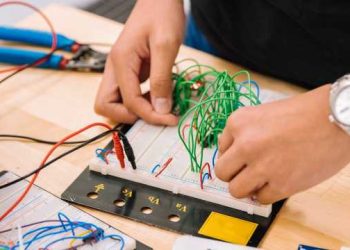The Impact of E-learning on Traditional Education Systems
In recent years, there has been a significant shift in the way we approach education. The rise of technology has brought about many changes, with one of the most noticeable being the advent of e-learning. E-learning refers to the use of electronic devices and technology to deliver educational content, either in a traditional classroom setting or through online courses. This shift towards digital learning has had a profound impact on traditional education systems, both positive and negative. In this blog post, we will explore the impact of e-learning on traditional education systems and the implications for the future of education.
One of the most significant impacts of e-learning on traditional education systems is the increased access to education. With the rise of online courses and digital learning platforms, students no longer have to rely on traditional classroom settings to receive an education. This has opened up new opportunities for students who may not have access to quality education in their local area. For example, students in rural or remote areas can now access courses from top universities around the world, giving them access to a higher quality of education than they may have otherwise had.
E-learning has also changed the way education is delivered. Traditional education systems are often based on a one-size-fits-all model, where students are expected to learn at the same pace and in the same way. With e-learning, students can learn at their own pace and in a way that works best for them. This personalized approach to education has been shown to improve student engagement and achievement, as students are able to learn in a way that suits their individual learning styles.
Additionally, e-learning has made education more accessible to people with different learning needs. For example, students with disabilities may find it easier to access education through online courses, as they can customize the learning experience to suit their specific needs. This has the potential to level the playing field for students with disabilities, who may have previously struggled to access quality education.
Another impact of e-learning on traditional education systems is the reduction in costs. Traditional education can be expensive, with students often having to pay for tuition, textbooks, and other materials. E-learning has the potential to reduce these costs, as online courses are often cheaper than traditional courses. Additionally, students can save money on commuting and other expenses associated with attending classes in person. This cost-saving aspect of e-learning has the potential to make education more accessible to a wider range of students, particularly those from lower-income backgrounds.
However, e-learning is not without its challenges. One of the main concerns with e-learning is the potential for a lack of social interaction and face-to-face communication. Traditional education systems are often based on the idea of learning in a social environment, where students can interact with each other and with their teachers. E-learning can sometimes feel isolating, as students are often working alone on their computers. This lack of social interaction can have a negative impact on student engagement and motivation, as students may struggle to stay motivated without the support and encouragement of their peers and teachers.
Another challenge with e-learning is the digital divide. Not all students have access to the technology and internet required to participate in online courses. This can create inequalities in access to education, with students from lower-income backgrounds or rural areas potentially being left behind. Bridging this digital divide is essential if e-learning is to truly revolutionize education and make it more accessible to all students.
In conclusion, e-learning has had a significant impact on traditional education systems. It has increased access to education, personalized learning, and reduced costs. However, there are challenges that need to be addressed, such as the potential for a lack of social interaction and the digital divide. Moving forward, it will be important for educators to find ways to incorporate the benefits of e-learning into traditional education systems while addressing the challenges that come with it. Ultimately, the goal should be to create a more inclusive and accessible education system that benefits all students, regardless of their background or circumstances.













